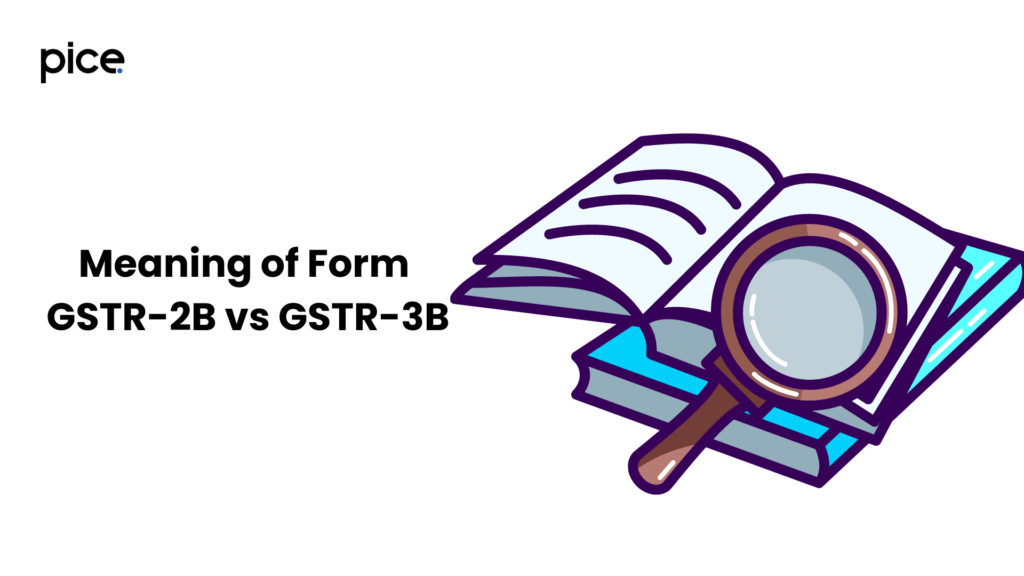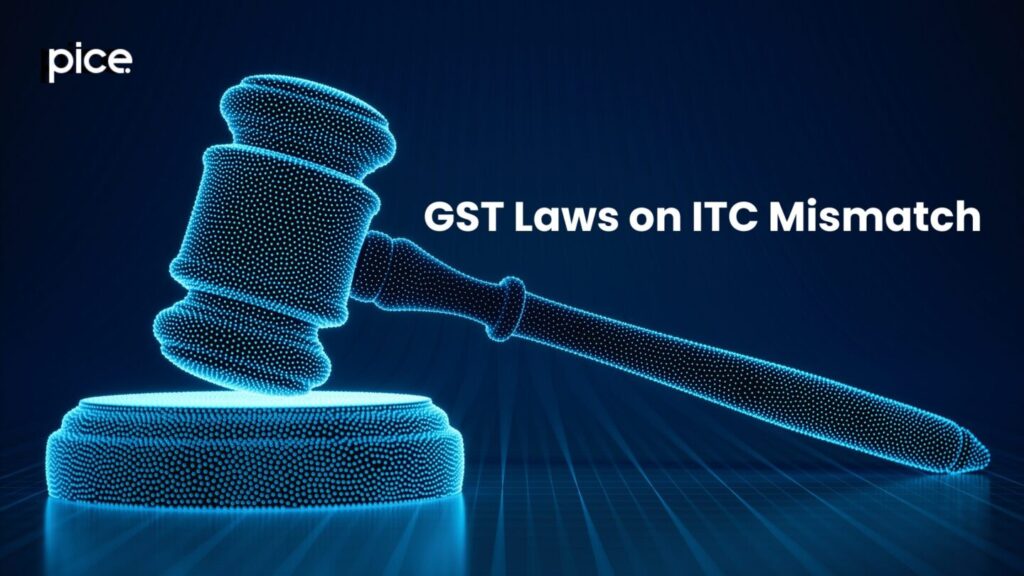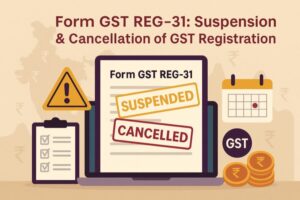Step-by-Step Guide: Fixing ITC Mismatch in GST Annual Return
- 26 Aug 24
- 11 mins

Step-by-Step Guide: Fixing ITC Mismatch in GST Annual Return
- Meaning of Form GSTR-2B vs GSTR-3B
- Importance of GSTR-2B Reconciliation with GSTR-3B and Purchase Register
- How to do a GSTR-2B Reconciliation with the GSTR-3B
- Reasons for ITC Differences in GSTR-2B vs GSTR-3B
- Mismatch of ITC Amount in Form GSTR-9 & GSTR-2A Form
- Actions after GSTR-2B and GSTR-3B Reconciliation
- GST Laws on ITC Mismatch
- Best Practices for Managing ITC Mismatch
- Conclusion
Key Takeaways
- Regular Reconciliation: Perform regular reconciliations between GSTR-2B, GSTR-3B, and purchase registers to ensure accurate ITC claims and compliance with GST provisions.
- Supplier Communication: Maintain open communication with suppliers to ensure timely and accurate reporting of invoices, preventing mismatches due to non-reporting or misreporting.
- Compliance with Time Periods: Ensure all ITC claims and reconciliations are completed within the relevant time periods to avoid penalties and ensure adherence to GST compliance norms.
- Use of Advanced Reconciliation Tools: Utilize advanced reconciliation tools for efficient data matching, reducing errors, and maintaining efficient reconciliation status.
- Accurate Return Filing: File all GST returns accurately, including FORM GSTR-1, GSTR-2, GSTR-2A, and GSTR-3B, to prevent discrepancies and ensure proper records for audits and inspections.
The Goods and Services Tax (GST) regime in India has brought about significant changes in the way businesses handle their taxes. Among the various forms and returns that businesses need to file, GSTR-2B and GSTR-3B play crucial roles in the reconciliation process for input tax credits (ITC).
Mismatches between these forms can lead to discrepancies and potential compliance issues. This guide aims to explain the reasons behind ITC mismatches, the importance of reconciliation, and the best practices to ensure smooth tax filings.
Meaning of Form GSTR-2B vs GSTR-3B

GSTR-2B is an auto-drafted ITC statement generated monthly. It provides a static summary of ITC available to the taxpayer for a specific period based on the data furnished by their suppliers in Form GSTR-1, GSTR-5, and GSTR-6. GSTR-2B is intended to aid taxpayers in reconciling their ITC with their purchase registers and ensure that they claim the correct amount of credit.
The form GSTR-3B is a monthly self-declaration form that taxpayers use to report their total GST liabilities and ITC claims. It is a crucial return that determines the amount of tax payable after adjusting the ITC. Unlike GSTR-2B, GSTR-3B is not auto-populated from the supplier's data but must be filled in by the taxpayer based on their records.
Importance of GSTR-2B Reconciliation with GSTR-3B and Purchase Register
Why Reconciliation is Crucial
Reconciliation between GSTR-2B and GSTR-3B is essential for multiple reasons. It ensures that the ITC claimed is accurate and matches the ITC available in the GSTR-2B statement, which reflects the suppliers' data. This process helps identify discrepancies early and avoids potential legal issues and penalties.
Reconciliation plays a vital role in GST compliance, ensuring accuracy and consistency between the taxpayer's records and the information furnished by suppliers. Here are the key reasons why reconciliation is crucial:
Benefits of Accurate Reconciliation
Accurate reconciliation offers several benefits, including:
1. Avoidance of Demand Notices
Reconciliation helps avoid demand notices from the tax authorities. Accurate matching of the records ensures that all discrepancies are resolved, preventing any legal actions or penalties.
2. Ensuring Correct Details
Accurate reconciliation ensures that all details, including outward supplies and input tax credits, are correct. This minimizes errors in GST returns, enhancing the overall compliance process.
3. Claiming Genuine Input Tax Credit
Reconciliation helps in claiming the correct and genuine input tax credits. It matches the purchase details with the supplier's outward supplies, ensuring that only eligible credits are claimed.
4. Compliance with GST Norms
Regular reconciliation ensures adherence to GST norms and rules, preventing any non-compliance issues. It helps in maintaining accurate records that are required for audits and inspections.
5. Identifying Discrepancies
Reconciliation helps in identifying discrepancies in the data provided by suppliers and the recipient's records. It ensures that any differences are corrected in time, maintaining the accuracy of GST returns.
6. Efficient Payment of Tax
Accurate reconciliation ensures that the tax payable and tax paid details are correctly matched, leading to efficient payment of taxes. It prevents overpayment or underpayment of taxes, which can lead to financial discrepancies.
7. Effective Use of Reconciliation Tools
Using reconciliation tools helps automate the reconciliation process, making it more efficient and less time-consuming. These tools assist in matching large volumes of data accurately and quickly.
8. Enhancing Business Compliance
Reconciliation helps businesses comply with various provisions of GST, ensuring that all transactions are accurately recorded and reported. This enhances overall business compliance and reduces the risk of penalties.
9. Maintaining Proper Records
Reconciliation helps in maintaining proper records of all transactions, which is essential for filing annual returns and other GST forms. Accurate records are crucial for audits and resolving any disputes with tax authorities.
10. Ensuring Timely Corrections
Reconciliation enables timely corrections of any errors or discrepancies in the records. This ensures that the correct details are reflected in the GST returns, avoiding any future complications.
How to do a GSTR-2B Reconciliation with the GSTR-3B
Step-by-Step Reconciliation Process
Step 1: Download GSTR-2B Statement

- Access the Common Portal: Log in to the GST common portal using your credentials.
- Navigate to GSTR-2B: Go to the 'Returns Dashboard' under the 'Services' section.
- Select Relevant Period: Choose the tax period for which you need to reconcile.
- Download Statement: Download the GSTR-2B statement, an auto-drafted form that contains information on all input tax credits (ITC) that suppliers have reported.
Step 2: Download GSTR-3B Filed Returns
- Retrieve Filed Returns: Access the 'Returns Dashboard' to view and download the GSTR-3B returns filed for the same tax period.
- Ensure Consistency: Confirm that the period matches the GSTR-2B statement to ensure consistency in reconciliation.
Step 3: Compare ITC Claimed
- Extract ITC Details: Extract the ITC details from both GSTR-2B and GSTR-3B forms.
- Match ITC Claimed: Compare the ITC claimed in the GSTR-3B return with the ITC available as per the GSTR-2B statement.
- Identify Exact Matches: Look for exact matches in ITC amounts and supplier details.
Step 4: Identify Discrepancies
- Note Discrepancies: Identify and note any discrepancies between the ITC claimed in GSTR-3B and the ITC available in GSTR-2B.
- Missing Invoices: Look for any missing invoices or differences in invoice amounts.
- Discrepancies in FORM: Record any discrepancies related to the forms, such as incorrect GSTIN, mismatches in invoice dates, or errors in invoice details.
Step 5: Adjust and Rectify
- Make Adjustments: Make necessary adjustments in the subsequent GSTR-3B returns to rectify any mismatches identified during reconciliation.
- Adjust ITC Claimed: Adjust the ITC claimed in the GSTR-3B to match the ITC available as per GSTR-2B.
- Include Debit and Credit Notes: Consider any debit notes or credit notes that may affect the ITC.
Tools and Software for Reconciliation
Several tools and software are available to aid in the reconciliation process. These tools automate data comparison, highlight discrepancies, and generate reports for easy reference. Popular options include Pice, ClearTax, Tally ERP 9, and Zoho Books.
Reasons for ITC Differences in GSTR-2B vs GSTR-3B
Errors in Supplier Data
One of the common reasons for ITC mismatches is errors in the data provided by suppliers. If suppliers file incorrect or incomplete data in their GSTR-1, it can lead to discrepancies in the recipient's GSTR-2B statement.
Timing Differences
Timing differences arise when the supplier files their returns late, causing a mismatch in the reporting periods. This can result in ITC being available in a different month than when it was claimed in GSTR-3B.
Misreporting or Non-reporting
Misreporting or non-reporting of invoices by suppliers can lead to significant mismatches. If a supplier fails to report an invoice, the recipient cannot claim the corresponding ITC, resulting in a discrepancy.
Mismatch of ITC Amount in Form GSTR-9 & GSTR-2A Form
Common Causes of Mismatch
- Data Entry Errors: Mistakes made during data entry in either form can lead to mismatches.
- Unreported Transactions: Invoices not reported by suppliers in GSTR-1 will not reflect in GSTR-2A, causing a mismatch.
- Amendments Not Reflected: Amendments made to previously filed returns may not be reflected in GSTR-9, leading to discrepancies.
Rectification and Adjustment Methods
To address mismatches, businesses should:
- Communicate with Suppliers: Ensure that suppliers report all invoices accurately and timely.
- Amend Returns: File amendments to rectify errors in previously filed returns.
- Regular Reconciliation: Perform monthly reconciliations to catch discrepancies early and make necessary adjustments.
Actions after GSTR-2B and GSTR-3B Reconciliation
Reporting Discrepancies
If discrepancies are found during reconciliation, they should be reported in the subsequent GSTR-3B returns. Accurate reporting helps in maintaining compliance and avoiding penalties.
Claiming Correct ITC
Ensure that only the ITC matching with the GSTR-2B statement is claimed in GSTR-3B. Any unclaimed ITC due to mismatches can be rectified in the subsequent month's return after reconciliation.
GST Laws on ITC Mismatch

Legal Provisions and Penalties
The GST laws prescribe strict penalties for ITC mismatches and wrongful claims. Section 16 of the CGST Act outlines the conditions for claiming ITC, and non-compliance can lead to penalties, interest, and reversal of ITC.
Legal provisions also include Section 42 and Section 43 of the CGST Act, which deal with matching, reversal, and reclaim of ITC. Non-compliance with these provisions can result in demand notices and penalties from the proper officer.
Compliance Requirements
Businesses must comply with the provisions of the GST Act regarding ITC claims. Regular reconciliation and accurate reporting are mandatory to avoid legal repercussions. Businesses must ensure that ITC claimed in GSTR-3B matches the ITC available in GSTR-2B.
Compliance with the correct input tax credits and reporting within the relevant period is essential. Accurate returns in FORM GSTR-1, GSTR-2, and GSTR-3B are necessary for maintaining compliance.
Best Practices for Managing ITC Mismatch
- Regular Reconciliation: Perform regular reconciliations between GSTR-2B, GSTR-3B, and purchase registers to ensure accuracy in ITC claims. Monthly reconciliations help in the early detection of discrepancies and compliance with GST provisions.
- Supplier Communication: Maintain open communication with suppliers to ensure timely and accurate reporting of invoices. Regular follow-ups can prevent mismatches due to non-reporting or misreporting.
- Time Period Compliance: Ensure all reconciliations and ITC claims are done within the relevant time period to avoid penalties and ensure secretarial compliance.
- Use of Advanced Reconciliation Tools: Utilize advanced reconciliation tools for efficient data matching, reducing errors and maintaining accurate reconciliation status.
- Accurate Filing of Returns: File all GST returns accurately, including FORM GSTR-1, GSTR-2, GSTR-2A, and GSTR-3B, to prevent discrepancies and ensure proper records.
- Annual Return and Form GSTR-9: File the annual return in Form GSTR-9 accurately to consolidate data from all returns and address any mismatches.
Conclusion
Overall, managing ITC mismatches between GSTR-2B and GSTR-3B is crucial for maintaining direct tax compliance and optimizing claims of credit. Regular reconciliation, accurate reporting, and effective communication with suppliers are key strategies to minimize discrepancies.
By understanding the reasons for mismatches and implementing best practices, businesses can ensure smooth and compliant GST filings.
💡 If you want to pay your GST with a Credit Card, then download Pice Business Payment App. Pice is the one stop app for paying all your business expenses.
 By
By 

















